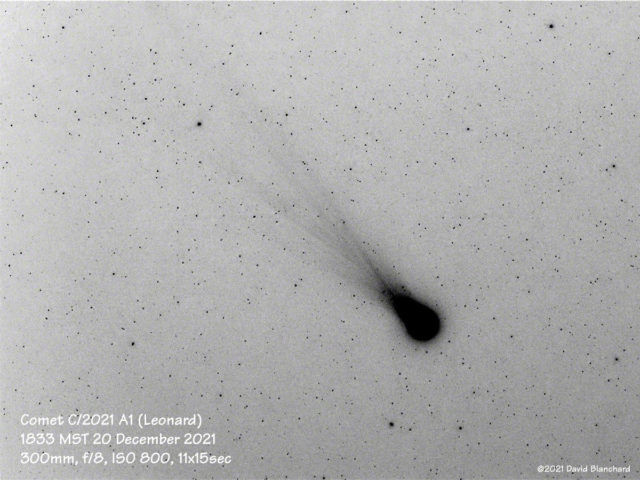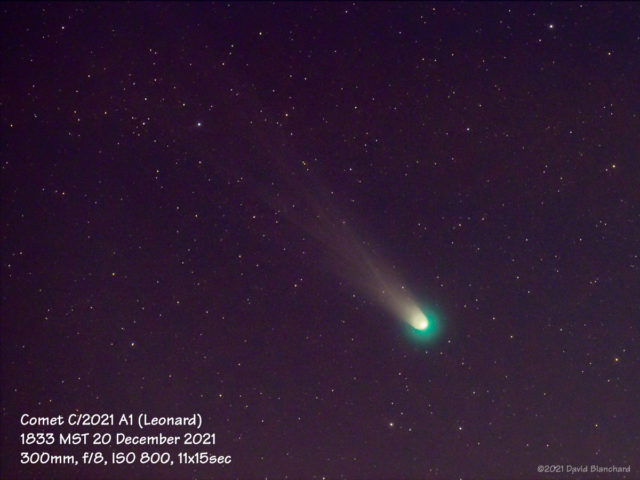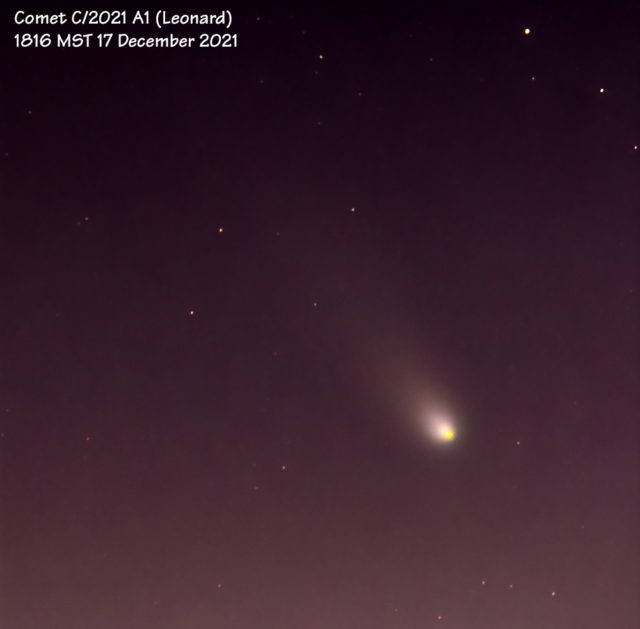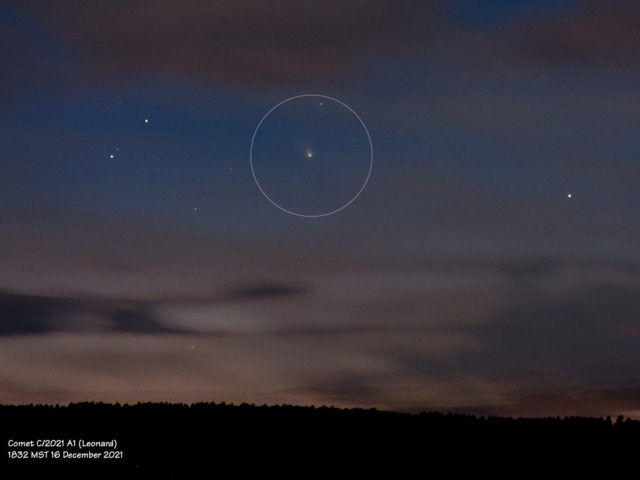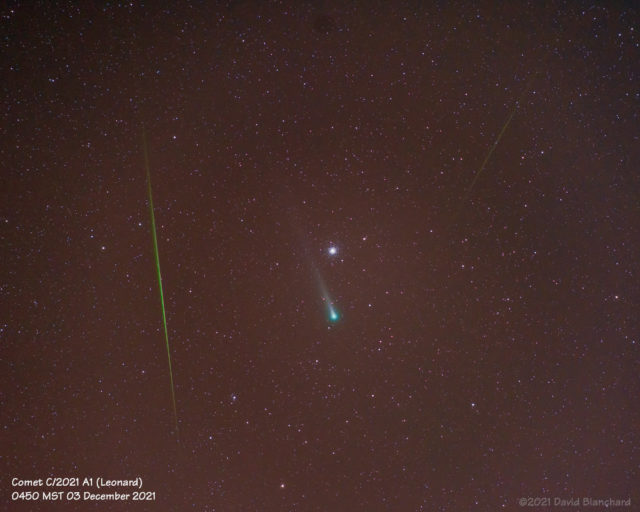It’s been awhile since the last post about the comet—but cloudy skies with lots of rain and snow have made observations difficult. Finally, we had a break in the weather on New Year’s Day and I was able to capture additional images.
The comet has dropped lower in the sky making it difficult to get good images because the comet is now located in the band of twilight glare. Only at the end of astronomical twilight is the sky dark enough but by this time the comet is very low on the horizon leaving only minutes to shoot until it sets.
Below are two images of the comet. The first is a set of images taken between 1832 and 1850 MST. The best 30 images were combined and averaged in Starry Sky Stacker then histogram stretched using rnc-color-stretch. Individual images were shot at 85mm, ƒ/4, ISO 100, and 15 seconds. The resulting image shows the tail extending nearly to the upper left corner.
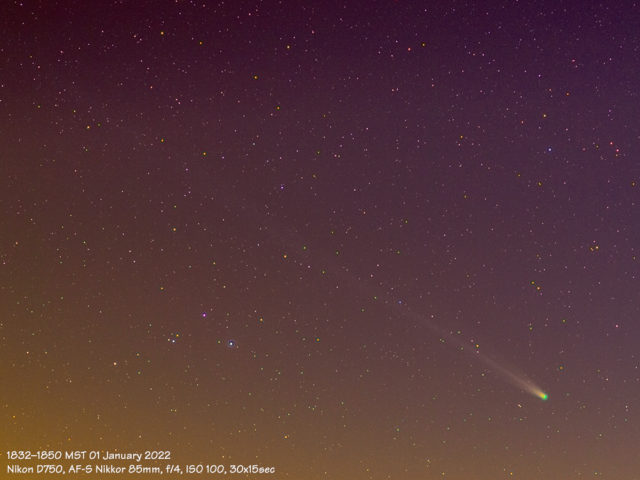
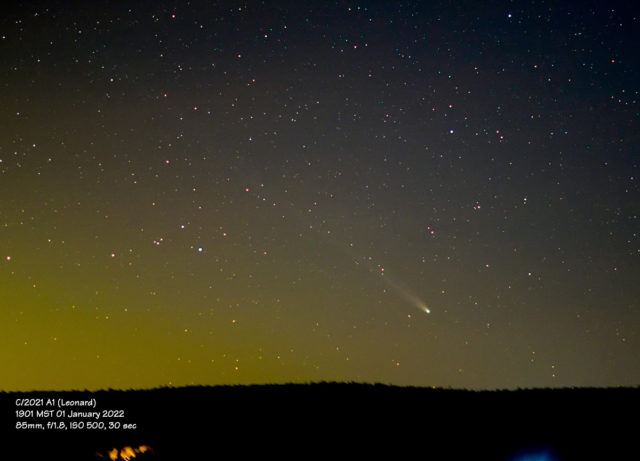
The second image is a single image taken at 1901 MST at 85mm, ƒ/1.8, ISO 500 and 30 seconds. This image shows how close the comet was to the horizon. The glow at the bottom of the image is the light dome from Phoenix about 200 km to the south.
The comet is moving away from us and lower in the sky. I’m not certain I will be able to get another chance to capture any images. For those in the southern hemisphere, the comet is better placed in the night sky for viewing and photography and there have been some amazing images captured. Spaceweather.com noted that “…Intense solar heat has given the comet one of the most beautiful tails astronomers have ever seen…”
